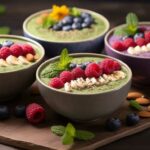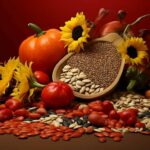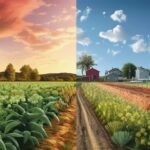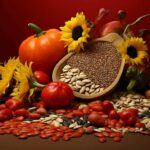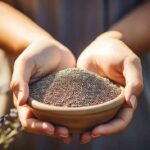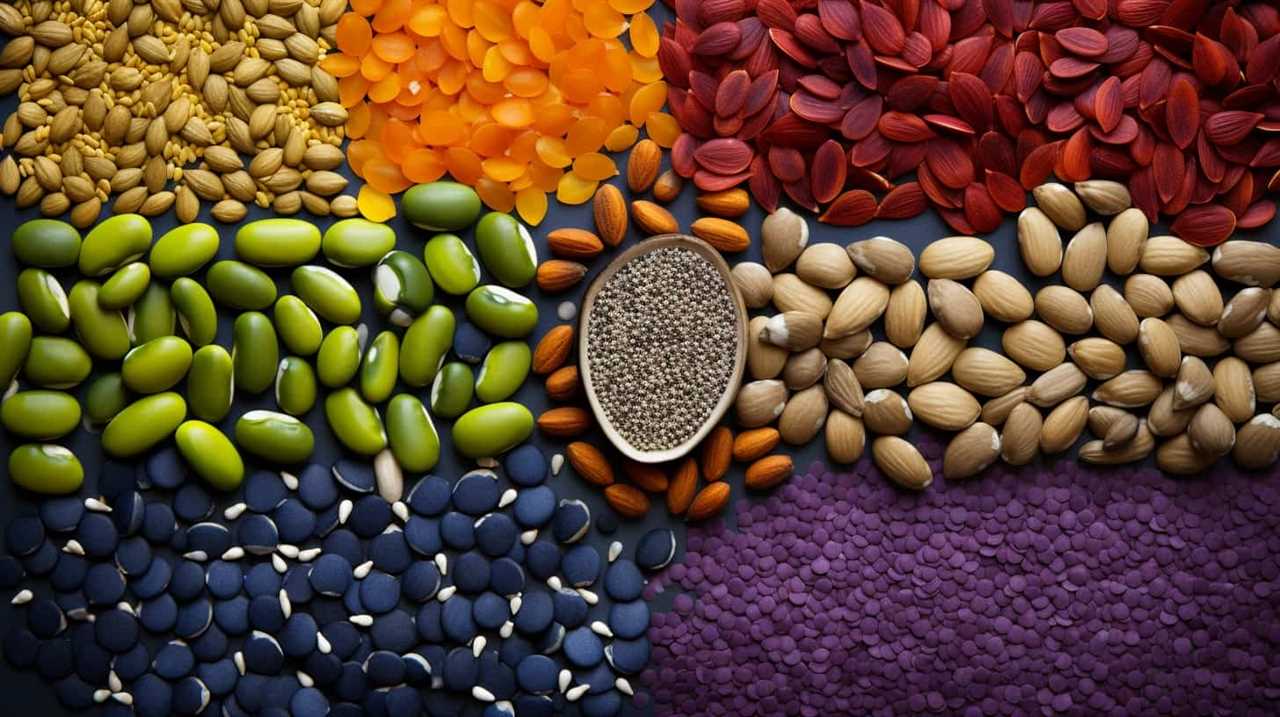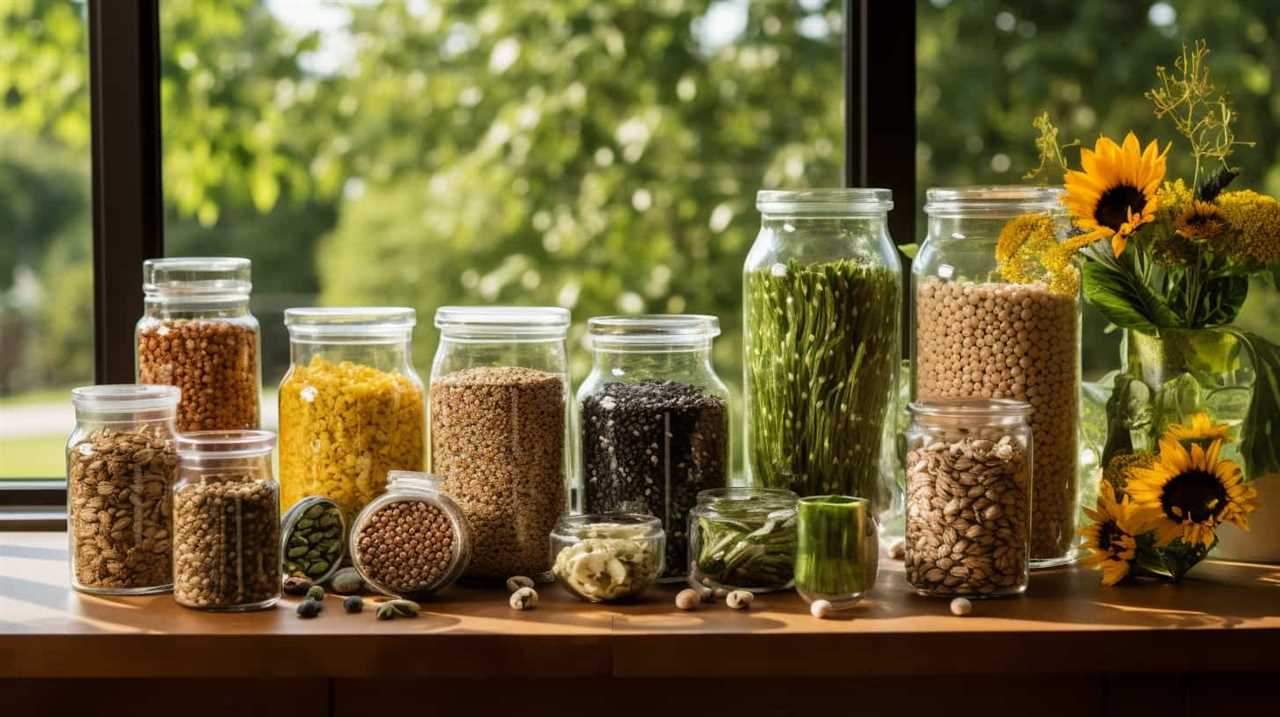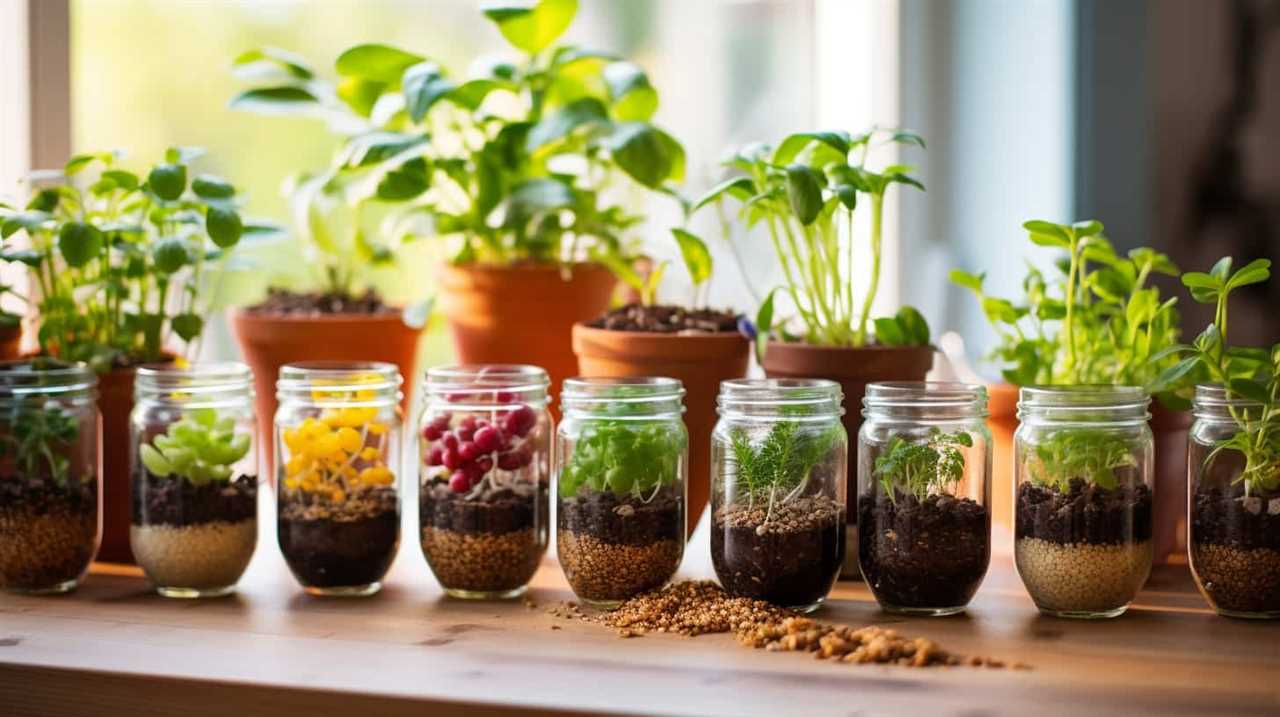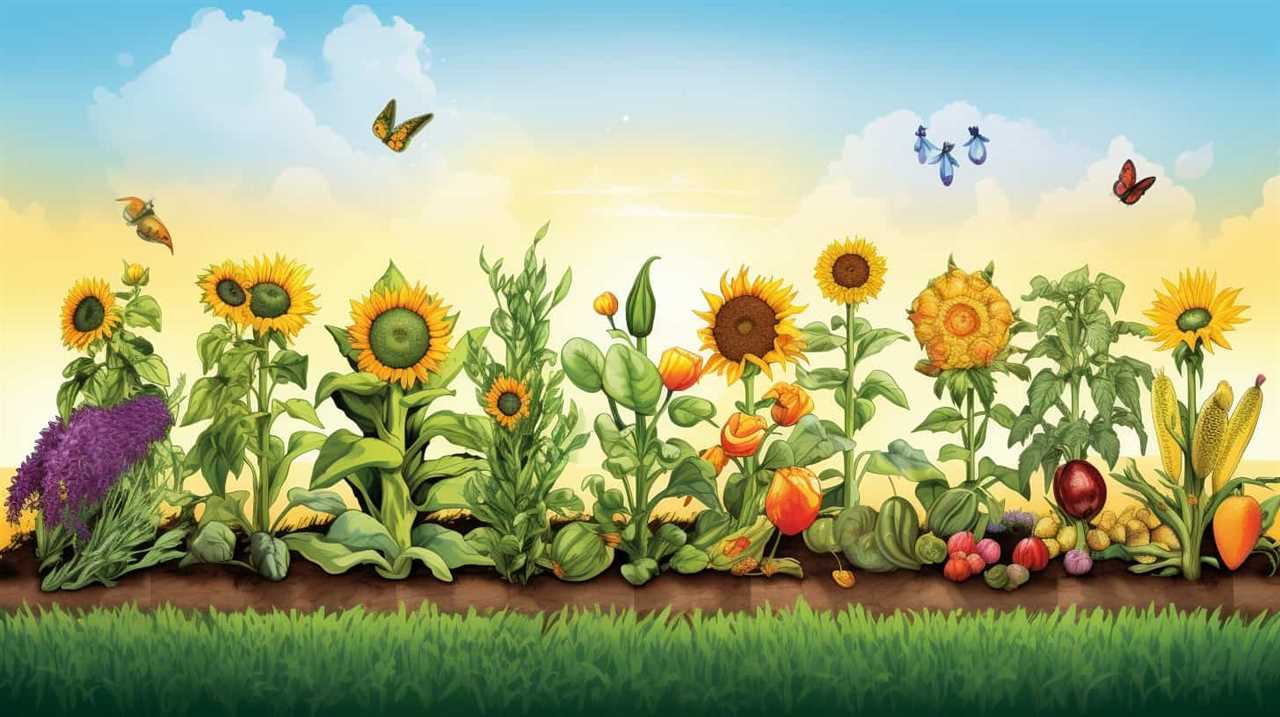
Are you prepared to uncover the secrets to successful chia farming? Look no further! This article reveals the top 9 natural techniques for ensuring a plentiful chia harvest.
From soil preparation to pollination enhancement, we have got you covered. Get ready to dive into the world of precise, informative, and liberating methods that will revolutionize your chia cultivation journey.
Let’s embark on this transformative adventure together!
Key Takeaways
- Thoroughly remove weeds and debris from the area
- Choose high-quality seeds for successful and prolific growth
- Genetic diversity ensures adaptability to various environmental conditions
- Implement companion planting techniques for natural pest control and weed management
Soil Preparation
When preparing the soil for cultivating chia, it’s important that we begin by thoroughly removing any weeds or debris from the area. This ensures a clean and fertile environment for the chia seeds to grow.

After clearing the area, we can implement composting techniques to enrich the soil. Composting involves the decomposition of organic matter, such as kitchen scraps and yard waste, into nutrient-rich humus. This process not only improves soil structure but also enhances its ability to retain moisture, promoting healthy chia growth.
Additionally, crop rotation is essential for maintaining soil health and preventing disease and pest infestations. By alternating chia with other crops, we can prevent the buildup of specific pests and diseases, ensuring long-term productivity and sustainability in chia cultivation.
Proper Seed Selection
When it comes to chia cultivation, proper seed selection is crucial for achieving successful and prolific growth. The quality of the seeds plays a significant role in determining the overall yield and health of the plants. By choosing high-quality seeds, farmers can ensure better germination rates, stronger plants, and improved resistance to diseases and pests.
Additionally, selecting seeds from a diverse range of genetic sources can enhance the adaptability of chia plants to different environmental conditions, further optimizing their growth and productivity.
Seed Quality Importance
To ensure successful chia cultivation, we prioritize selecting high-quality seeds that meet our specific criteria. Seed quality plays a crucial role in determining the viability and germination rate of chia seeds. High seed viability ensures a greater chance of successful germination, leading to healthy and productive chia plants.
When selecting seeds, we carefully examine their physical appearance, looking for uniformity, size, and color. We also consider the source of the seeds, opting for reputable suppliers who adhere to strict quality control measures.
By choosing high-quality seeds, we can maximize the chances of achieving optimal germination rates and establishing a robust chia crop.
With this foundation in place, we can now explore the benefits of genetic diversity in chia cultivation.

Genetic Diversity Benefits
For optimal chia cultivation, we prioritize selecting high-quality seeds that offer genetic diversity. Genetic variation benefits the chia crop in several ways, enhancing its resilience and overall productivity.
Here are three key advantages of genetic diversity:
- Disease resistance: Genetic variation ensures that some chia plants possess natural resistance to certain diseases or pests. By selecting seeds with diverse genetic traits, we increase the likelihood of having individuals that can withstand specific threats, reducing the risk of crop loss.
- Adaptability: Chia plants with genetic diversity are better equipped to adapt to changing environmental conditions. This allows them to thrive in a variety of climates, soils, and growing conditions, increasing the chances of successful cultivation.
- Yield stability: A diverse chia population can better withstand fluctuations in weather patterns and other environmental stressors. By incorporating genetic diversity into our seed selection process, we can increase the stability of chia yields, ensuring a consistent supply of this valuable crop.
Adaptability to Conditions
Our emphasis on genetic diversity benefits chia cultivation by ensuring the adaptability of our seed selection to various environmental conditions. This adaptability is largely due to the genetic diversity of our seed selection. We carefully choose seeds that have demonstrated resilience and adaptability in different climates. Chia plants have the ability to thrive in a wide range of climates, from arid to humid, and from hot to cold. By doing so, we’re able to provide farmers with seeds that have a higher chance of success, regardless of the specific climate conditions they face. This adaptability not only increases the chances of successful chia cultivation, but also allows farmers to grow chia in regions that were previously considered unsuitable.
Optimal Planting Time
During our research, we discovered that the best time for planting chia is between the months of April and May. This seasonal consideration is of utmost importance for achieving optimal growth and yield.

Here are three key factors to consider when choosing the best planting time:
- Temperature: Chia plants thrive in warm temperatures, with an ideal range between 60 and 80 degrees Fahrenheit. Planting during April and May ensures that the soil has warmed up sufficiently for germination and early growth.
- Daylight hours: Chia plants are highly responsive to changes in daylight hours. Planting during the months of April and May guarantees longer daylight hours, allowing the plants to receive ample sunlight for photosynthesis and overall development.
- Moisture availability: Planting chia during April and May aligns with the onset of the rainy season in many regions. This ensures adequate moisture availability for seed germination and establishment, reducing the need for excessive irrigation.
Adequate Irrigation Techniques
To ensure the proper growth and development of chia plants, it’s crucial to provide them with adequate irrigation. Understanding the optimal water requirements and implementing efficient irrigation methods are essential for successful chia cultivation.
Optimal Water Requirements
For achieving optimal water requirements in chia cultivation, we rely on efficient irrigation techniques. Water scarcity is a growing concern, making it essential to use water wisely. Drip irrigation is a popular method that ensures precise water delivery to the chia plants’ root zones, minimizing water wastage.
Here are three key factors to consider for optimal water requirements:

- Soil Moisture Monitoring: Regularly monitor the soil moisture levels to determine the appropriate irrigation schedule. This can be done using moisture sensors or by conducting simple soil tests.
- Irrigation Timing: Watering the chia plants during cooler hours, such as early morning or late evening, can minimize water loss due to evaporation. It also allows the plants to absorb water more effectively.
- Watering Depth: Ensure that the water penetrates the root zone adequately. This can be achieved by adjusting the irrigation system to deliver water slowly and evenly, allowing it to penetrate deeply into the soil.
Efficient Irrigation Methods
To ensure optimal water usage in chia cultivation, we implement efficient irrigation methods that prioritize the conservation and effective distribution of water resources.
One such method is drip irrigation, which delivers water directly to the roots of the chia plants, minimizing evaporation and reducing water waste. This technique ensures that water is used only where it’s needed, promoting plant growth while conserving water.
Additionally, rainwater harvesting is another important aspect of our irrigation strategy. By collecting and storing rainwater, we can supplement our irrigation needs, reducing our reliance on freshwater sources. This not only helps to conserve water but also reduces the strain on local water supplies.
Natural Pest Control Methods
One of the most effective natural pest control methods for prolific chia cultivation is implementing companion planting techniques. This organic pest management strategy involves growing certain plants alongside chia crops to deter pests and attract beneficial insects.
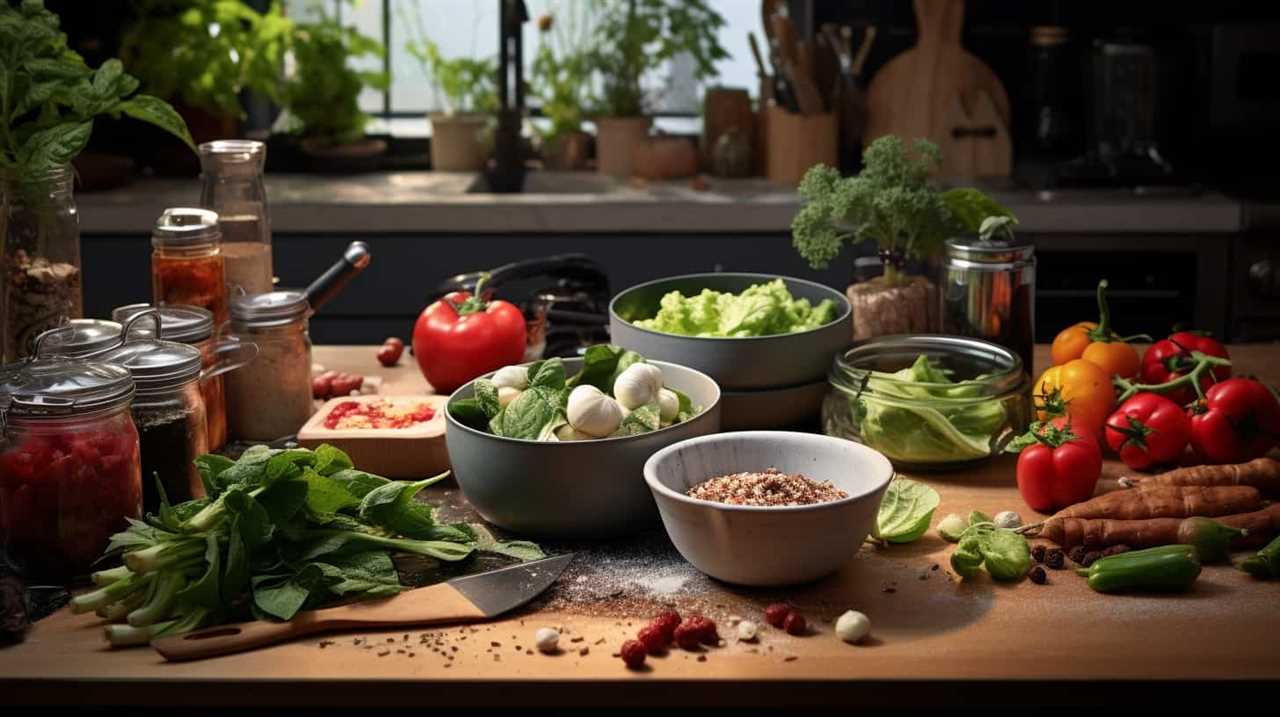
Here are three examples of companion plants that can help control pests and enhance chia cultivation:
- Marigolds: These vibrant flowers emit a strong scent that repels many common garden pests, such as aphids and nematodes.
- Nasturtiums: These colorful flowers not only add beauty to the garden but also act as a trap crop, luring pests away from chia plants.
- Basil: The aromatic oils of basil plants act as a natural insect repellent, deterring pests like mosquitoes and flies.
By incorporating these companion plants, farmers can naturally manage pests without the need for synthetic pesticides.
Transitioning into the subsequent section about effective weed management, implementing a comprehensive pest control strategy is crucial for maintaining a healthy chia crop.
Effective Weed Management
To effectively manage weeds in our chia cultivation, we employ a combination of manual removal and mulching techniques. These methods align with our commitment to organic weed control and sustainable weed management. Manual removal involves physically uprooting weeds by hand to prevent them from competing with the chia plants for nutrients and sunlight. Mulching, on the other hand, involves covering the soil surface with organic materials like straw or wood chips. This not only suppresses weed growth but also helps retain moisture and regulate soil temperature. By using these techniques, we can minimize the use of synthetic herbicides and promote a healthier, more environmentally friendly chia cultivation system.

| Organic Weed Control | Sustainable Weed Management |
|---|---|
| Manual removal | Minimizes synthetic herbicide use |
| Mulching | Suppresses weed growth |
| Promotes environmental sustainability |
Nutrient-Rich Fertilization Strategies
For our nutrient-rich fertilization strategies, we incorporate a variety of organic amendments to enhance the soil fertility and optimize chia plant growth. Our approach focuses on using organic alternatives and sustainable practices to ensure the long-term health of the soil and minimize environmental impact.
Here are three key elements of our fertilization strategies:
- Compost: We utilize compost made from organic matter such as kitchen scraps, yard waste, and livestock manure. This helps to improve soil structure, increase nutrient content, and enhance water retention capabilities.
- Cover crops: We plant cover crops, like legumes, between chia crops to provide natural nitrogen fixation. These cover crops also prevent soil erosion, suppress weed growth, and add organic matter when incorporated into the soil.
- Green manure: We incorporate green manure into the soil, which involves growing specific plants and then tilling them back into the soil as a natural fertilizer. This practice adds nutrients, improves soil structure, and enhances microbial activity.
Pollination Enhancement Techniques
To maximize pollination rates, we employ a combination of natural methods and targeted interventions.
One effective technique is pollinator attraction. We create a welcoming environment by planting attractive flowers and providing a diverse range of nectar sources. This encourages pollinators such as bees, butterflies, and birds to visit our chia fields, increasing the chances of successful pollination.

Additionally, we utilize manual pollination to ensure optimal results. By carefully transferring pollen from the male flowers to the female flowers, we can guarantee fertilization and seed formation. This method allows us to control the pollination process and overcome potential limitations in natural pollinator availability.
Our approach combines the best of nature and human intervention to achieve high pollination rates and ultimately, abundant chia harvests.
Harvesting and Storage Methods
Continuing our focus on optimizing chia cultivation, we implement efficient harvesting and storage methods to preserve the quality and longevity of our abundant chia harvests. To ensure a successful and effective chia harvest, we employ the following techniques:
- Timing: Harvesting chia at the right time is crucial. We wait until the chia plants have reached full maturity and the flowers have dried completely. This ensures that the seeds have fully developed and are ready for harvest.
- Gentle Extraction: We use gentle harvesting methods to prevent damage to the chia plants and ensure the seeds remain intact. This includes handpicking the seeds or using a low-speed mechanical harvester for larger-scale operations.
- Proper Storage: To maintain the freshness and nutritional value of the chia seeds, we store them in a cool, dry, and airtight environment. This helps to prevent moisture and oxygen from degrading the quality of the seeds over time.
Conclusion
In conclusion, by employing proper soil preparation, seed selection, planting time, irrigation techniques, pest control methods, weed management, fertilization strategies, pollination enhancement techniques, and harvesting and storage methods, one can achieve prolific chia cultivation.

These natural techniques work in harmony to create optimal conditions for chia growth and ensure a bountiful harvest.
With dedication and attention to detail, anyone can master the art of chia cultivation and reap the rewards of a thriving chia crop.



